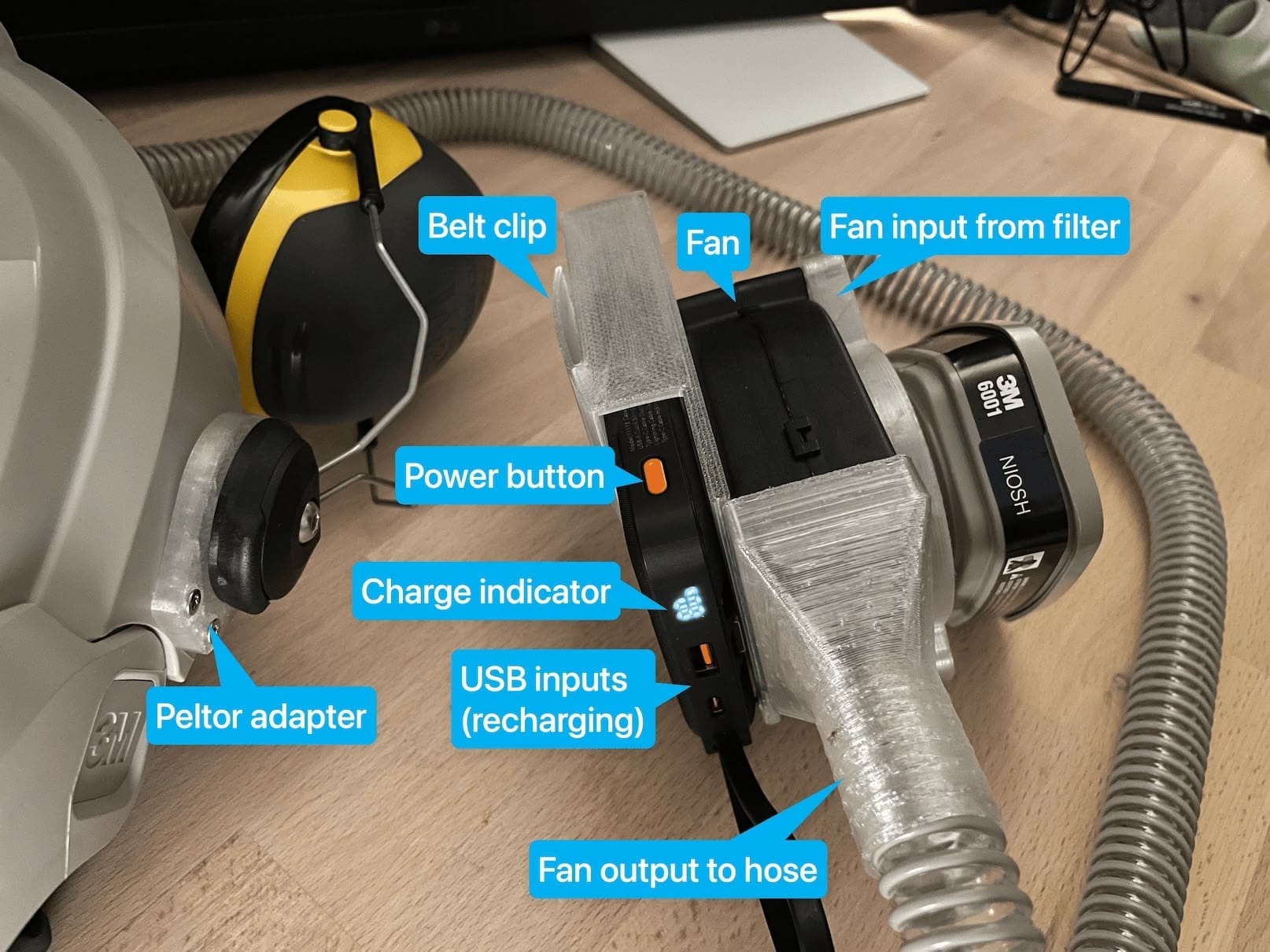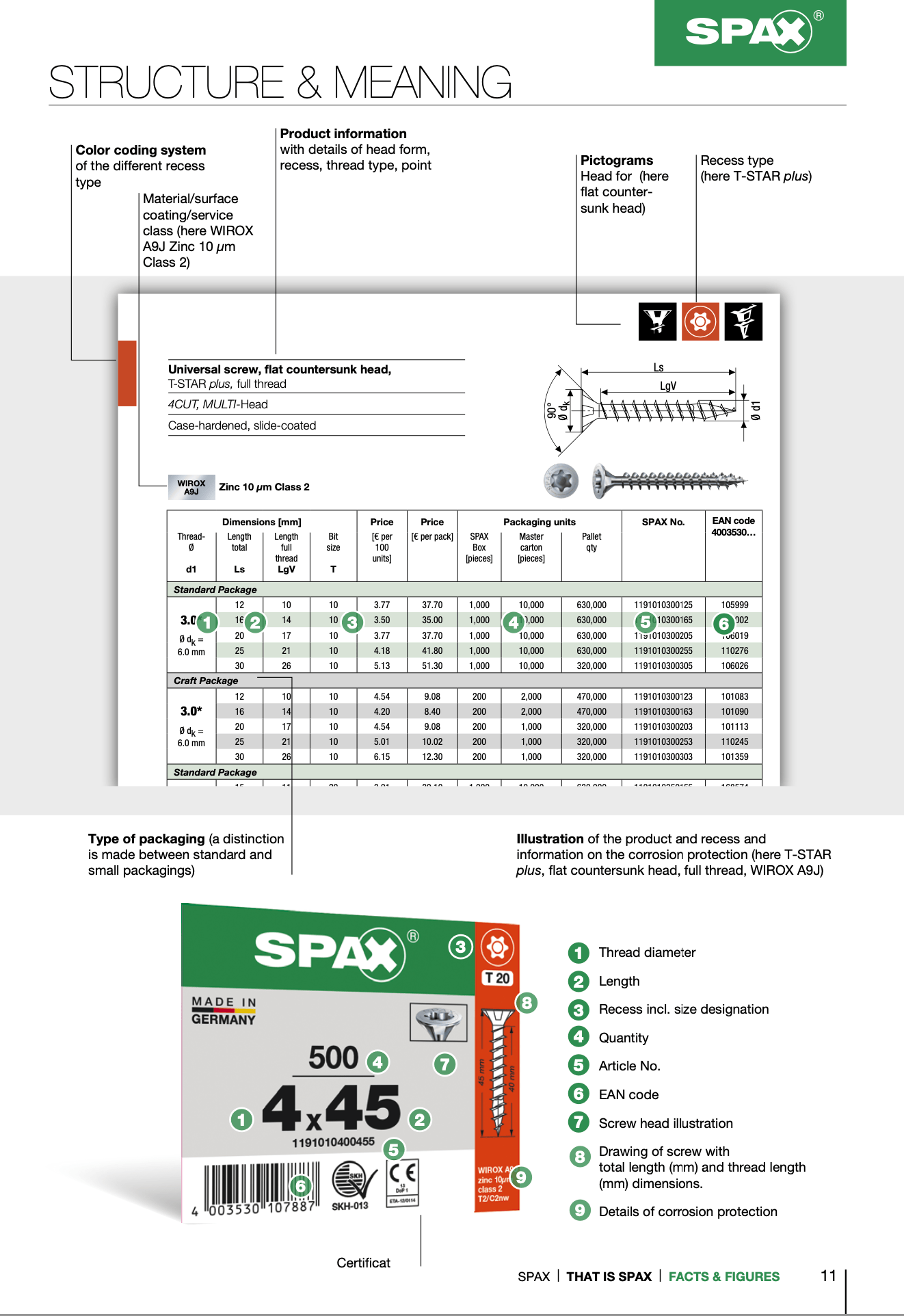Hi friends,
I’m coming through New York City September 29 – November 3. I’m putting together an Erdős-ish itinerary, so if you’ve got a juicy programming / CAD / design problem, a sofa, and want to collaborate for a day or two, drop me a line!
A simple powered-air respirator for woodworking
I wanted an integrated, minimal-faff PPE setup with ear protection, eye impact protection, and respiratory protection that I could use for woodworking while wearing my regular eyeglasses. 3M has an awesome “Versaflo” system which starts at about $1650, but that’s a bit steep for a casual hobby, so I paired its helmet ($225) with $50 worth of stuff from AliExpress and a bit of 3d-printing to make my own version:
Check out the full writeup and bill of materials on my website.
Why I shop via print catalogs in 2025
While shopping online for hardware to build my flatpack bed (exciting conclusion next month!), I was reminded that typical web designers have an extreme phobia of information density.
If you are shopping for any kind of specialty hardware — in my case screws and threaded inserts — I recommend skipping the manufacturer’s website and shopping via their print (PDF) catalog instead. It’ll probably have more detailed comparisons between product lines and their options and will be faster to navigate quickly. (The search is “local-first”, as the kids say.)
If there is no catalog, try having an LLM condense the anemic page 1-of-17 e-commerce website slop into a spreadsheet.
I meant to jot a quick note for the newsletter, but it quickly got out of hand, so I published it separately: Why I shop via print catalogs in 2025.
If you’ve never seen a catalog before, here’s a taste of the sort of information-dense (meta!) graphic design you might find within them. But be warned: Once you’ve tasted such sweet knowledge, you will be upset at 95% of e-commerce websites.
You have any favorite layout systems?
Back in 2016 I was working on a graphic design app with an integrated layout engine, and during that project I was extremely chuffed to develop a conceptual model that unified whitespace/margins/alignment with element sizing. This simplified both the designer-facing model we needed to teach, as well as internal implementation we needed to build— instead of juggling lots of specific terms like “margin-left” and “width”, we used the horizontal/vertical-neutral terms “axis”, with elements having “before/size/after”. (More details in this talk.)
Anyway, now that I’m designing my own lil’ CAD system I’m thinking about all this stuff again, and I’m curious if you’ve seen any particularly expressive or well designed layout schemes, or detailed reviews of classics like Illustrator’s align and distribute tools.
Some example scenarios I’d love to express succinctly and clearly:
- given a rectangle, pattern as if rotating around a given axis so you have N evenly spaced copies
- ditto, but the rectangles should all have the same alignment rather than being rotated
- a group of objects should be moved so they have equal space between them
- this is a special case of “place these objects on a curve” where the curve is a line between the centers of the two most distant objects
- what variations are useful beyond looking at the centers of the objects?
- make N copies of an object along a curve, subject to constraints on the spacing
- specify a rectangular pattern (e.g., grid of holes for an MFT workbench) that’s centered within a rectangle, even if the initial patterned instance is not centered (e.g., you want an even number rows/columns)
I’m particularly interested in implementation prior art leveraging pattern matching and algebraic data types. A big open question in my mind is whether it’ll be simpler and faster to:
- express such layout constraints in a way that can be calculated directly (e.g., centering an object is done by calculating
initial_spacing = (total_space - item_size) / 2), - deal with abstract/general constraints and solve them numerically
We’ll see!
Misc. stuff
C++ seems fine, actually. I wanted to play with the Open CASCADE CAD kernel, and after finding that opencascade-rs didn’t wrap what I needed and auto-generating bindings with autocxx didn’t spark joy (calling superclass methods), I started my career-first
CMakeLists.txtfile and decided to Just Write C++. Turns out Clang’s LSP server is quite snappy at everything I want (completions, jumping to definition, and finding references) and the formatter lines everything up nicely. I’m just writingauto const foo = ...everywhere and I haven’t segfaulted yet! I feel sheepish for having avoided C++ for so long.Unitree Introducing | Unitree A2 Stellar Explorer. I don’t follow robotics closely, but this robot dog looks incredible. I can’t tell if the pinned comment from the company is wholesome or ominous: “Please everyone be sure to use the robot in a Friendly and Safe manner.”
Building Ultra Cheap Energy Storage for Solar PV: “Our technology works by storing energy as heat in the least expensive storage material available - large piles of dirt.”
Design Rules & Best Practices for FFF 3D Printing | Hydra Research
2021 Dan Gelbart talk at UBC on “Creative solutions to impossible engineering problems”.
I’ve been enjoying the Wookash podcast’s long technical interviews with programmers (mostly game developers). Notable episodes I’ve enjoyed so far are Why use C for UI library (author of Clay) and Painting with math with Inigo Quilez (Shadertoy / signed distance fields).
No slicer: single continuous path 3d print. Programmed in Grasshopper for a transparent print with 90’s consumer electronics vibes.
Fan Fundamentals - From The Wright Brothers To Today. I loved watching this 50 minute documentary about fans from a company that…sells fans.
I Made an Open-Source Multidirectional 5-Axis 3D Printer and Slicer

